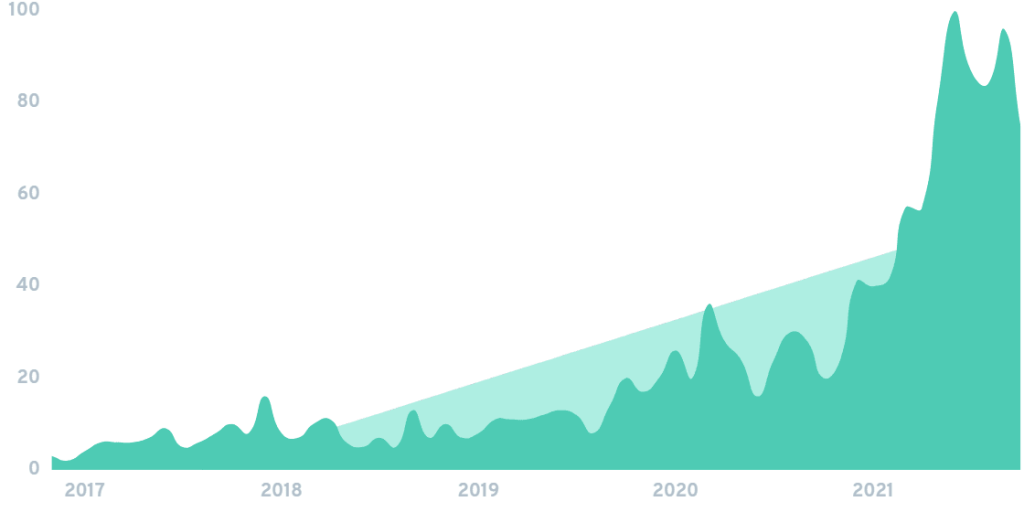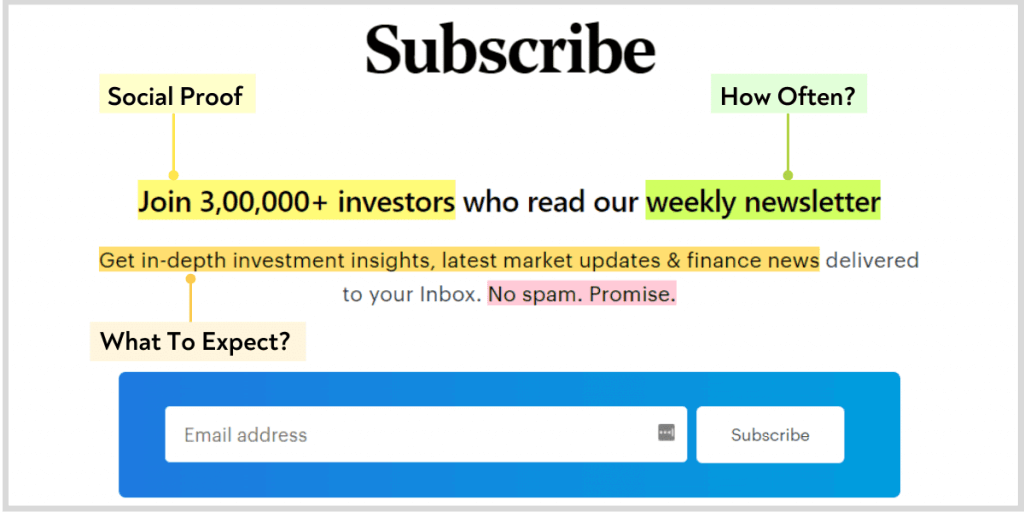About The Business:
SmallCase is a modernized way of investing in stocks and ETF baskets with your preferred broker. Building a diversified and low-cost long term portfolio is easier than ever before, thanks to smallcase.

Relevant Read: Core marketing features and concepts
Results Achieved:
Smallcase has seen a huge demand in terms of search popularity, especially after the pandemic.
Have a look at the search popularity of ‘Smallcase’ in the last 5 years:

Data source: ExplodingTopics
Some possible reasons:
- A great product that makes investing real easy
- Creating brand awareness by providing educational content
The Smallcase newsletter is one of the great examples of delivering educational, useful and relevant content consistently.

Every Sunday, Smallcase delivers an insightful newsletter to over 3,00,000 investors.
And, they are doing this for 80+ weeks straight. Isn’t it awesome?
Let’s break down each element of their content marketing program.
Why Do They Work?
1. Education before promotion →
Most businesses and B2B brands use a newsletter to send occasional sales messages or special offers to their prospects.
In this case, the Smallcase newsletter is the opposite.
Three core reasons behind the success of their newsletter:
- It makes the investor more knowledgeable about the market. Hence help in decision making.
- Consistency helps to stay top of the users’ mind.
- It doesn’t seem like a sales message or promotional content.
Here’s how the weekly newsletter feels like:

Obviously, in the end, conversion matters the most for a business to survive. And, the newsletter does this well by their product with the informational insights. We call this product-led content approach.
Definition of the product led content →

In this case, the newsletter shares the performance of one of their Smallcases. Here’s the example:

Even though Smallcase is promoting its product indirectly, investors are more likely to click on either ‘Read More’ or ‘See Smallcase’.
2. Content distribution strategy →
One of the biggest mistakes that brands make is they focus more on creating more content and less on distributing existing content.
Here, the story is different as the newsletter content is well repurposed on different content platforms such as Twitter, Facebook, Instagram, etc.

Example of repurposing content on different content platforms.
The benefits?
- Recycling existing content on multiple content platforms increases the effectiveness.
- Brand awareness on social media profiles
- Saves budget and resources to create additional content for each platform.
Not only that, but they also publish their newsletter on the website to make it accessible for all.
Key Takeaways
- Newsletter is still one of the best ways to have the most control over your audience. Think of starting a newsletter that just doesn’t send promotional content but also educational and relevant content.
- Be consistent. The study by Joe Pulizzi says that it takes around 12-18 months of consistent delivery of helpful content before seeing any significant growth.
- Always have a content repurposing strategy. Instead of creating more and distributing less, focus on distributing more and creating less content.